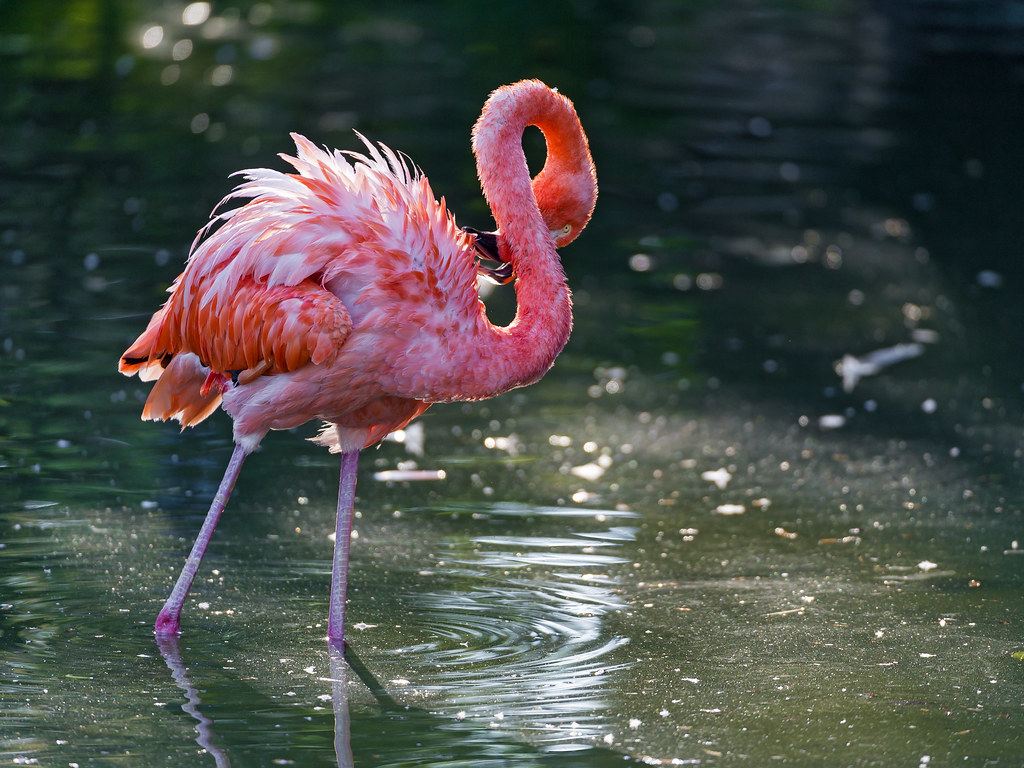

“When we made Pink Flamingos in the fall of ’71, nobody collected ’50s stuff-it was before ‘modern-antiques’ was even a term-and thrift shops were filled with it.Įverybody was collecting ’30s and ’40s stuff-even hippiesĭressed like they were the gold diggers of ’33-but nobody wanted to “I liked because the ’50s had not been revived yet,” says Waters. Just as Waters’ film was banned in theaters, some neighborhood associations started to ban the eyesores in their communities. Hippies opposed the use of plastic, and what had once been a symbol of taste quickly devolved into a tchotchke of tackiness. From California to Charm City, families welcomed the bright, beloved bird into their yards.īy the 1960s and ’70s, however, the flamingo’s mainstream popularity waned. With a burgeoning consumer society came the embrace of plastic and mass production, and hence, Featherstone’s tour de force. Same, but front lawns were a way to keep up with the Joneses and also standĪpart. All across the country, houses looked the II America was in a state of suburban sprawl, with baby-boom desire driving development of nuclear dream homes. One of his first assignments was to create the neon, umbrella-shaped bird, which debuted in 1957, and was soon immortalized in American culture. He attended art school there, honing his craft as a sculptor, before ultimately landing a job at a large manufacturer of lawn and garden decorations. Fittingly surnamed, Featherstone was not a Baltimore native but rather from Massachusetts. On Monday, the plastic bird’s inventor, Don Featherstone, passed away at the age of 79, nearly 60 years after his famed flamingo first came off the assembly line. “That may have been the beginning of my obsession with them, because whatever I was told I wasn’t supposed to like, I always did.” “When I grew up, I think my mother, who was great at the tyranny of good taste, mentioned her disdain for lawn ornaments, especially pink flamingos,” Waters says. Over the years, the mid-century lawn ornament has cemented itself in our city’s narrative, largely thanks to our own auteur John Waters and his 1972 film Pink Flamingos. And, of course, we have the pink flamingo. We will incorporate comments that we receive from others as well, and welcome hear from anyone who may have additional information, particularly if they have knowledge of cultural information we do not mention that would aid others in growing Muhlenbergia 'Pink Flamingo'.Baltimore is a city of iconic symbols. We also consider observations that we have made of it growing in the nursery's garden and in other gardens, as well how it has performed in our crops out in the nursery field.

The information displayed on this page is based on research conducted about this plant in our library and from reliable online sources. The second image taken on Halloween day in a garden in Santa Barbara.

The pictures on this page courtesy of Carol Reese, Ornamental Horticulture Specialist at the University of Tennessee Extension Service.
#Pink flamingo free
He was an ordained Lutheran minister but devoted his free time to the study of the botany. The German naturalist Johann Christian Daniel von Schreber (1739-1810) named the genus for Gotthilf Heinrich (Henry) Ernst Muhlenberg (1753-1815) who was American born but returned to his ancestral Germany for schooling and later returned to America. We thank the Grassman John Greenlee for turning us on to this wonderful grass and Hoffman Nursery in North Carolina for supplying us with our stock. The plant and flowers are much taller and upright like Muhlenbergia lindheimeri but more plumy and pink like Muhlenbergia capillaris. It is reasonable to assume that it is a hybrid between Muhlenbergia capillaris and Muhlenbergia lindheimeri. This plant is a naturally occurring hybrid that was discovered at Peckerwood Garden near Hempstead Texas. Great for use in mass plantings or in tight locations were its narrow and upright habit makes it the perfect fit. It is both drought tolerant and resistant to deer predation. This is a tough heat-loving grass that has performed well in the dry southwest US and in Texas. Hardy to at least -10 °and useful in USDA Zones 6-10 - some report good in zone 5 (-20 ☏) as well.
#Pink flamingo full
Plant in full sun and irrigate occasionally to infrequently. In late summer into mid fall appear airy pink flower spikes, arching above the foliage by about one and a half feet. Muhlenbergia 'Pink Flamingo' (Pink Flamingo Muhly) - An upright warm-season grass that has foliage to 3 to 4 feet tall by 2 to 3 feet wide with narrow gray-green leaves. Muhlenbergia 'Pink Flamingo' - Pink Flamingo Muhly Muhlenbergia 'Pink Flamingo' at San Marcos Growers


 0 kommentar(er)
0 kommentar(er)
